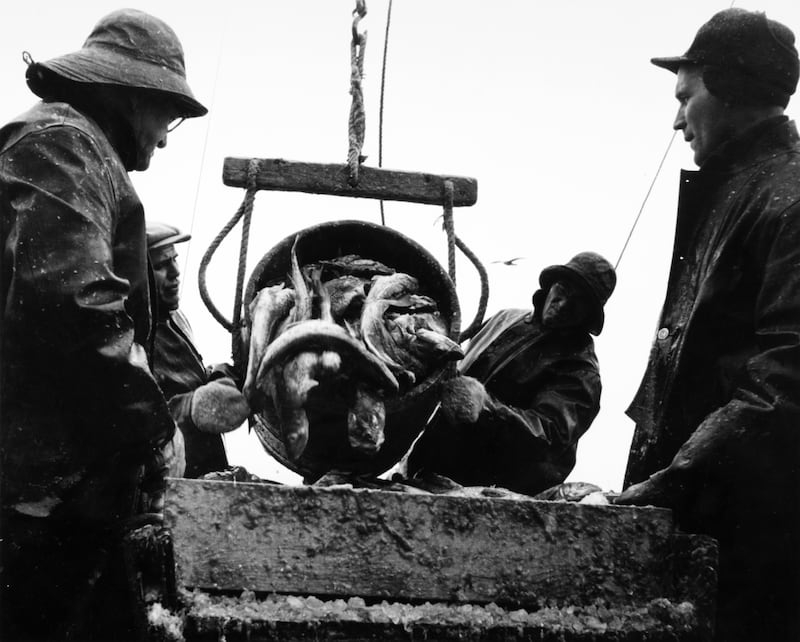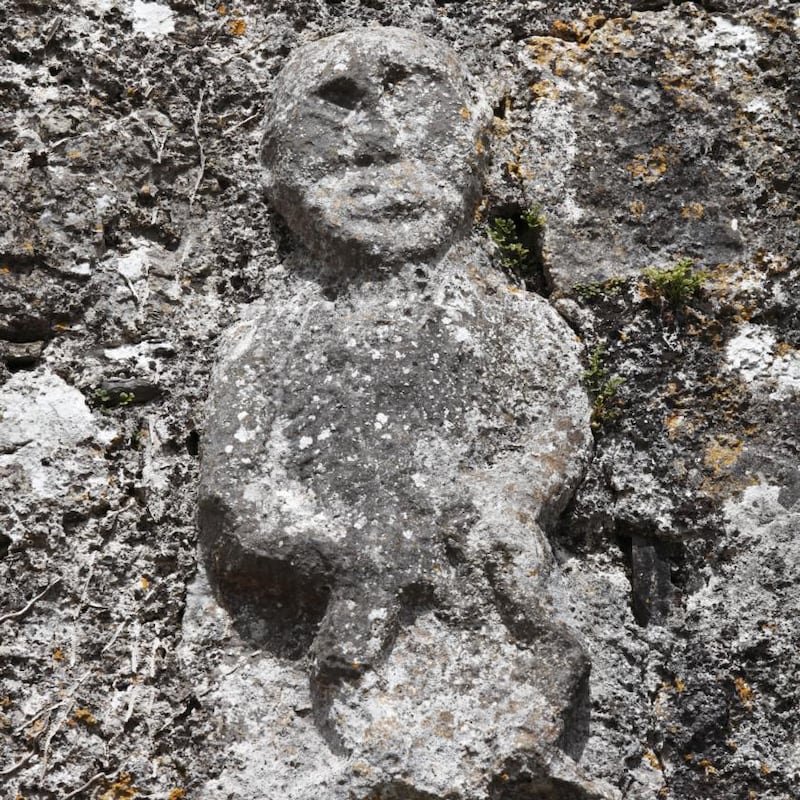For hundreds of years Ireland has had an icon of womanhood and a compelling symbol of all things female, yet few people know her name. The forgotten goddess is none other than Sheelah, once widely celebrated on March 18th, both in Ireland and among the diaspora, yet now all but disappeared. Fáilte Ireland should start to champion her alongside St Patrick: she could be worth a fortune.
Two years ago my research into this disregarded deity resulted in somewhat misleading headlines that said Sheelah was St Patrick's wife. That was not the case, but at least it brought Sheelah and her festival back to our attention. I believe Sheelah – or Sheila, Sheela, Shela, Sheelagh or Síle, depending on the source – has far more to her than the once widely held belief that she was our national saint's other half.
Sheelah's Day fell each year on March 18th, and the usual dispensation to disregard Lenten abstinence on March 17th and wet the shamrock – drink alcohol, in other words – in honour of St Patrick was extended to the following day as well, in honour of his so-called wife. The Freeman's Journal of March 20th, 1841, reported that a woman who appeared in court for drunkenness declared she bought "two small naggin of whiskey… not wishing to break through the old custom of taking a drop on St Sheelah's Day". In contrition to the judge, she vowed: "I here promise that for Patrick's Day or Sheelah's Day, or any other day in the calendar, I'll never stand in your presence again."
Some say Sheelah was 'Patrick's wife', others that she was 'Patrick's mother', while all agree that her 'immortal memory' is to be maintained by potations of whiskey
A painting by Erskine Nicol from 1856, depicting the revelries of such mid-Lenten festivities, is accurately entitled The 16th, 17th (St Patrick’s Day) and 18th March. This elongated name recognises that most Irish festivals, including fairs, pattern days and wakes, took place over three days: the gathering, the feast and the scattering. Sheelah’s Day was the last (but not the least) of the traditional three days of celebration that began on the eve of St Patrick’s Day.
William Hone gives a detailed account of Sheelah’s Day celebrations in Britain in The Every-day Book, from 1827.
“The day after St Patrick’s Day is ‘Sheelah’s day’, or the festival in honour of Sheelah. Its observers are not so anxious to determine who ‘Sheelah’ was, as they are earnest in her celebration. Some say she was ‘Patrick’s wife’, others that she was ‘Patrick’s mother’ while all agree that her ‘immortal memory’ is to be maintained by potations of whiskey. The shamrock worn on St Patrick’s day should be worn also on Sheelah’s day, and on the latter night, be drowned in the last glass. Yet it frequently happens that the shamrock is flooded in the last glass of St Patrick’s day, and another last glass or two or more on the same night, deluges the over-soddened trefoil. This is not ‘quite correct’ but it is endeavoured to be remedied the next morning by the display of fresh shamrock, which is steeped at night in honour of ‘Sheelah’ with equal devotedness.”
This festive time coincides with the vernal equinox, one of the two midpoints of the sun’s annual cycle, in the season of new fertility, when days are poised to outlast nights for the first time since the autumn equinox, the previous September. An emphasis on new life and procreation is manifest in a host of mythological incarnations and folk reflexes at this time of the year. The goddess and holy woman Brigid is celebrated on February 1st; the analogous figure of Gobnait, goddess of fertility and beekeeping, is commemorated on February 11th. These women usher in the new cycle of fertility with ploughing, sowing, the birth of animals, the rising of the sap and the reawakening of nature.
This time of year in the past brought an equal emphasis on human marriage and reproduction, with Shrove Tuesday, immediately before Lent, long being the most popular day in Ireland to be married.
The three-day carnival celebrating Patrick and Sheelah occurs at this key point in the calendar and in the annual cycle of fertility. That Sheelah is firmly situated around the equinox, the seminal pivot of fertility, indicates that she had distinct fertility associations and can be viewed as an equivalent to Brigid and Gobnait.
Patrick is fighting with his wife, now a miserable hag at war with the world. She spitefully brushes the last of the winter snow into the way of the new cycle of work
Sheelah still echoes through Newfoundland, otherwise known as Talamh an Éisc, or Land of the Fish, the most Irish place outside Ireland. An amazing legend on this Canadian island, which many still believe to be true, centres on Sheila na Geira, or Síle Ní Ghadhra, a young Irish princess from Connacht. Sometime in the 1600s, when she was en route to a French convent to finish her education under the care of her abbess aunt, pirates commandeered her ship. One of them, Gilbert Pike, from a well-to-do English family, fell in love with her. They married aboard and then settled down in Mosquito, in southwestern Newfoundland. Here, in time, Sheila na Geira gave birth to a child – according to tradition the first white European child to be born in Newfoundland – so it is said that many there owe their lineage to her. It is also said that every Irishman who visited and settled on Newfoundland paid obeisance to Sheila na Geira, who reportedly lived to 105.
In Ireland, especially from the mid-18th century onwards, Síle Ní Ghadhra was one of the most popular representations of the country, and in the aisling, or dream, poetry of the period she epitomises Ireland in its idyllic state: strongly independent, bountiful and fertile. In this sense Sheila joins the many women sovereignty figures who represent Ireland: Ériu, Fódla, Banba, Aoibheall, Clíodhna, Macha, Mór and Mórrígan, to name a few (and not forgetting the Christianised figures of Brigid and Gobnait).
In keeping with her mother-goddess attributes, the last big snowstorm after St Patrick’s Day is still called Sheila’s brush in Newfoundland. The idea is that Patrick is fighting with his wife, now a miserable hag at war with the world. (The idea that Patrick had a wife called Sheila must have arrived with the Irish of the 18th and 19th centuries.) She spitefully brushes the last of the winter snow into the way of the new cycle of work.
It’s significant that Síle na géag, or Sheila of the brush, is one way to render Sheela-na-gig, the name for the naked old woman who appears, exposing her genitals, in medieval stone carvings. We’ll return to this. As for the Newfoundland Sheila’s brush, sealing fleets would refuse to go back out on the ice until this storm had passed; fishermen continue to do so.

Sheelah is an enigmatic name. It and all its variant spellings appear only about 500 times in the 1911 census of Ireland. By contrast its English equivalent, Julia, has almost 30,000 entries. Similarly, no Sheilas appeared on the manifests for ships taking women convicts to Australia, even though the name has entered the language there as jocular but mildly pejorative slang for a woman or girlfriend.
That Freeman’s Journal court report from 1841 refers to the defendant as “a half-naked, wretched looking old woman” who was “charged with having been found drunk and incapable in the street”. The headline was “A Sheelah’s Forethought”. This and many other references made “Sheelah” a byword for a bedraggled old woman.
But elderly women also had experience of the world and were custodians of inherited knowledge, playing significant roles in rites of passage in the human life cycle and the cycle of the year. They acted as midwives, corpse washers and professional mourners; they advised on herbalism and vernacular medicine; and they were central to events such as the pattern day. In this respect Sheelah, as the old woman, is strongly resonant of the important Irish folk figure known as the Cailleach.
The Cailleach – the old, wise healer – is a multifaceted personification of the female cosmic agency. Irish mythological, historical and folkloric expressions cast her as the expression of the territorial- and tribal-sovereignty queen and as the life force inherent in nature, nurturing and maternal but also terrifying and destructive.

The Cailleach tradition’s deep roots in ideas of birth, fertility and death brings us back to the Sheela-na-gig. Ireland has more than 100 examples of these often-misunderstood medieval stone carvings. The women in them, who are reclining or squatting, often have big ears, long hair, gritted teeth, emaciated ribs and prominent breasts.
They often appear on medieval tower houses, medieval church sites and holy wells. I recently came across one on a round tower in Rattoo, in Co Kerry. For a long time they were seen as representations of the evils of lust or as ways of averting the “evil eye”. But Sheela-na-gigs are more convincing, in line with the Cailleach, as folk deities associated with birth and death. And so Sheelah embodies the cycle of fertility that overarches natural, agricultural and human procreation and death.
That Sheelah was thought of as St Patrick’s wife is a significant folk reflex. The cult of Patrick is firmly based on the pre-Christian deity Lug, or Lugh – as in Lughnasa or Lúnasa, the harvest festival – who represents the male side of the life-giving equation. Lug personifies the ideal man, exemplified in the complex ideology of Irish kingship. It is the union of male and female that allows us to exist.
It should be no surprise, then, that the three-day carnival to celebrate St Patrick, a major Christian icon, at the liminal point of the season of fertility, when human procreation is paramount, should include Sheelah, his consort.
As many of her devotees died in the Famine, and given the influence of the misogynist, patriarchal church, she has all but vanished from Irish life. I, for one, will be raising a glass to her on her feast day.
Shane Lehane teaches archaeology, folklore and history at CSN College of Further Education, in Cork, and lectures in the department of folklore and ethnology at University College Cork. He is always interested to hear about local folk custom and tradition; you can email him at s.lehane@csn.ie



















